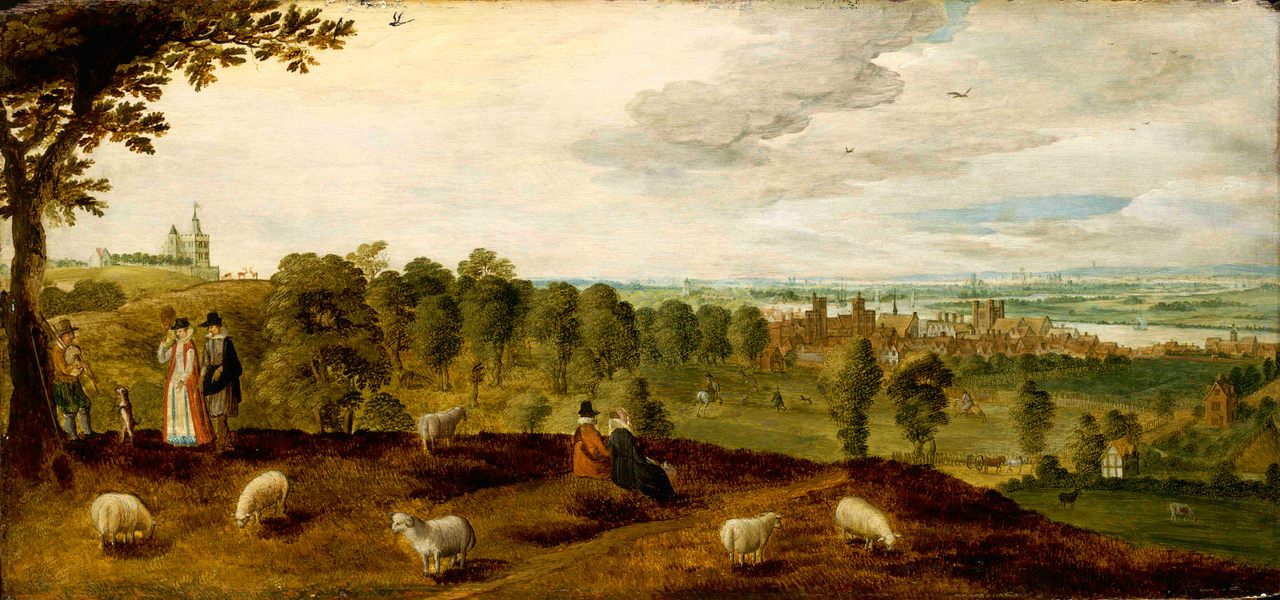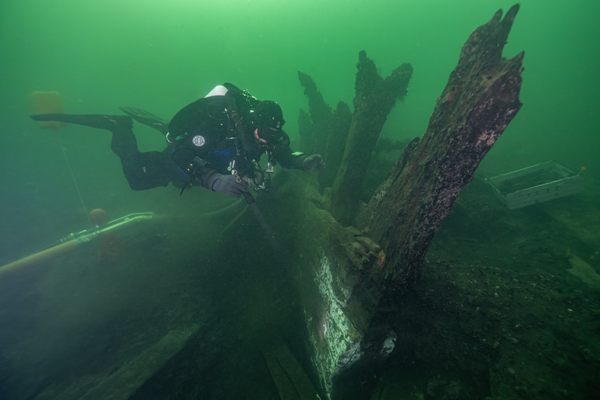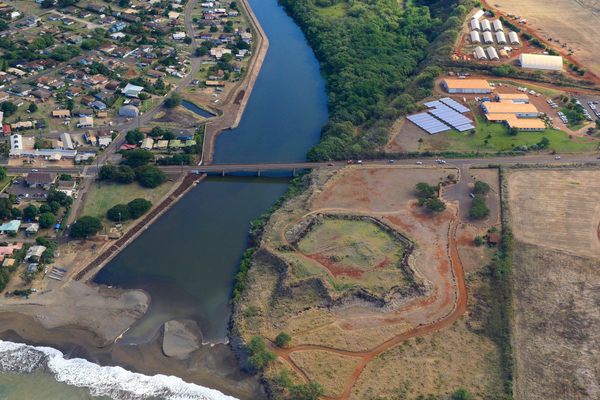Found: The Jousting Yard Where Henry VIII Took a Nasty Tumble
Researchers have located the site of an accident that rattled England’s many-wived widower.
A short ferry ride east of London, a picturesque lawn welcomes visitors to the sprawling grounds of the Maritime Greenwich World Heritage Site. At night, a bright green beam of light projects over the lawn, illuminating the Prime Meridian from the Greenwich Observatory up the hill. Five hundred years ago, this scene looked quite different. Back then, the lawn was a tiltyard, a rectangular field used for jousting and comprised of layered plaster and gravel, topped with sand and split down the middle by a wooden barrier called a tilt. The jousting ground was a little larger than Trafalgar Square, and King Henry VIII regularly competed there, until a bout in January 1536 ended with the king thrown to the ground and unable to speak for two hours.
The tiltyard was long thought to be on a particular portion of the property on the basis of some Tudor bricks found there in the 19th century, while a rail tunnel was dug under Greenwich. Now, a team of researchers from the University of Greenwich has pinpointed the precise location of the yard and the remains of the structures that surrounded it—about 300 feet east of where they expected to find it, and six feet below the modern-day grass.

The team was led by Simon Withers, a researcher and doctoral candidate at the University of Greenwich, who happened upon the research project at a rather fancy party he wasn’t keen on attending. There, Withers was introduced to Jane Sidell, an archaeologist and the Inspector of Ancient Monuments for Historic England, who suggested he have a look for the yard from the Tudor-era palace. “It’s just one of those things,” says Withers. “You go to the wrong drinks and end up finding a palace.”
Today, the tiltyard—the first permanent one in England—is adjacent to the Queen’s House, the country’s first Palladian building. But in 1536, the jousting ground was a focal point among several structures—a banqueting house, a theater (aptly called the ‘disguising house’), and the armory, all now gone—that made Greenwich Palace, where both Henry VIII and Elizabeth I were born, one of the king’s favorite residences. (The tiltyard was a major basis for its appeal, too: One year, Henry hosted his Christmas party out there, according to a 16th-century historian.)

Using ground-penetrating radar, Withers’s team searched for the wooden barrier that splits a tiltyard and prevented jousting opponents from colliding as they sought to knock each other off their mounts. That may have been picked up by the radar, though excavations would be needed to confirm it. But running the equipment (which looks like a lawn mower from “The Jetsons”) over the lawn, the team found other evidence: an octagonal foundation, which they believe is the base of one of the two viewing towers that once presided over the ground. The radar survey also picked up evidence of another near-circular foundation—possibly the southern viewing tower, a 19th-century structure from the Royal Naval School—as well as backfilled bomb craters from the Second World War and several structures that weren’t in the architectural records the team consulted.
“The survival of remains of one of the tiltyard towers was known, but the radar survey has shown up tantalizing glimpses of additional structures, although it’s not possible to date them with certainty,” writes Sidell in an email. “The towers were significant, brick-built structures, several storeys in height, for the privileged members of the court to watch the jousting.”

Bluff King Hal’s injuries and tumbles have long fascinated scholars, some of whom attribute the king’s stark behavioral changes (and a mightily wounded ego) to a jousting mishap. In 2016, a team of neurologists from Yale University revisited documents pertaining to the king’s health and pointed to several moments when grievous head injuries may have occurred. Two were jousting incidents, including one in 1536: The 45-year-old monarch sustained a particularly dicey injury when he fell off his armored horse in the tiltyard, and then the horse fell on him.
Afterwards, the king was said to be “without speech,” which the researchers took to mean knocked out. That reading is somewhat controversial—but if it’s right, speechlessness would have been an ominous sign. “When you’re trying to gauge how severe and injury is, how long someone is unconscious determines how severe the head injury is,” says Arash Salardini, a cognitive and behavioral neurologist now at UT Health, San Antonio, and a co-author of the 2016 paper.
After the injury, Henry’s attitude shifted—he became forgetful, and would abruptly fly into fits of rage. Of course, it’s difficult to map behavioral changes in a king who died nearly 500 years before modern medicine, who had plenty of stress on his plate in procreating an heir and running the country, and generally wasn’t the most benevolent ruler throughout his life. Moreover, “he was a bit killy-killy before the accident, so it’s not fair to say it completely changed him,” Withers says. “One thing that definitely happened is that his leg ulcerated and moving and walking became difficult.”

It also may have left him feeling a little vulnerable. “What can be overlooked in this, I think, is the way in which the fall might have affected Henry emotionally,” writes Joanne Paul, a historian at the University of Sussex and an expert on early modern England, in an email. “He had always been proud and confident, as young, healthy men with power and privilege often can be,” Paul continues, noting that the fall may have unlocked “a desire to overcompensate and a sensitivity about his masculinity and mortality.”
Whatever happened in Henry’s head may never be fully known. But now, the place where it happened has been found—and these days in Greenwich, there’s no more horsing around.

















Follow us on Twitter to get the latest on the world's hidden wonders.
Like us on Facebook to get the latest on the world's hidden wonders.
Follow us on Twitter Like us on Facebook